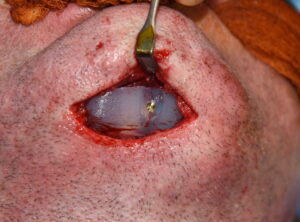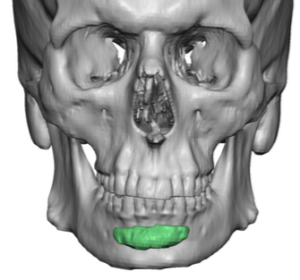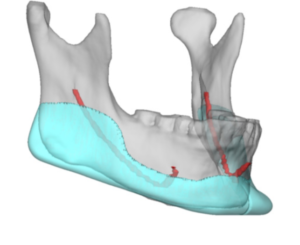Background: Chin augmentation is the original aesthetic facial augmentation procedure. In its infancy many different materials were used from cow bone to irradiated cartilage. The development of the silicone chin implant surpassed the use of other materials because of its performed shape and ease of insertion. As would be expected, looking at early chin implant augmentation techniques by comparison to today will seem primitive and often ill-advised. But that is only by comparison to what has been learned over the past three decades of clinical experience with the procedure.
Chin implant styles and an understanding of their aesthetic effects has evolved to better meet what patients want today. While patients used to speak exclusively about chin and facial profile enhancement, they often are desirous today of a more complete jawline effect. Jawline augmentation has become popular for both men and women although the flavor of the augmentation change does have some gender differences.
The big change from 1990 to today is that one no longer is restricted to implant styles and sizes that are commercially available. While preformed chin and jaw angle implants are effective for many patients, custom jawline implant designs offer patients endless options for shapes and sizes. While more costly some patients like the concept of having an implant made just for them with a full understanding of what is going to be implanted in them.

A custom jawline implant was designed that provide a major jawline effect with 12mms horizontal chin projection, 35mm chin width and 8 to 9mms jaw angle width. Its total volume was 26ccs. He was a big man (6’ 4” and 270lbs) so a sizable jawline implant was needed.


While technology has not made major advancements in the base materials used for facial implants, how they can be designed and manufactured has dramatically changed. Having the implant made for the patient’s specific needs and desires based in their specific anatomy provides an appealing option. Patients with prior standard implants that did not meet their aesthetic goals, those that have unique or asymmetric bony anatomy from natural development or from prior surgery, and those who want a very specific look are all good candidates for a custom implant design approach.
Case Highlights:
1) When it comes to jawline augmentation what was standard decades ago has been replaced by improved implant designs and styles.
2) An anatomic chin implant for a male is almost never an adequate chin augmentation method.
3) It is most ideal to place a custom jawline implant as one piece through the submental incision passing it safely under the bony exit of the mental nerve.
Dr. Barry Eppley
Indianapolis, Indiana







